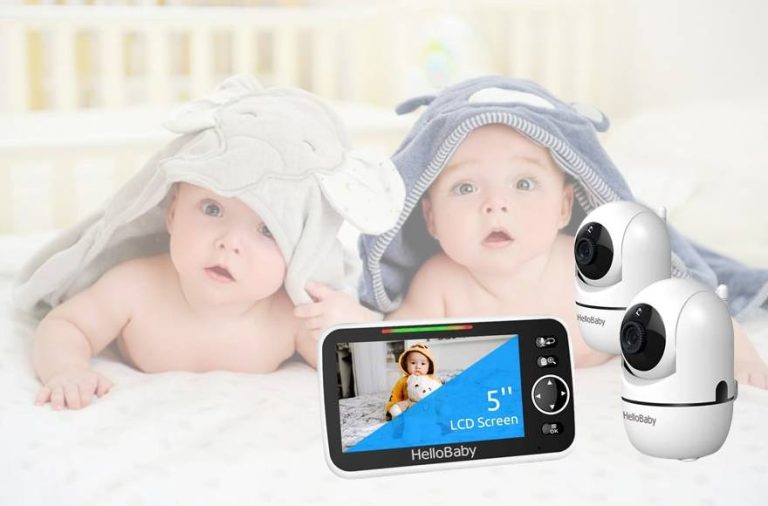What is the Safest Flotation Device for Kids?
Discovering the safest flotation device for children is vital for ensuring their safety in the water.
With various factors to consider, such as fit and Coast Guard approval, selecting the right life jacket can make a significant difference in preventing accidents.
Stay tuned to explore the best options for keeping kids safe while swimming.
What is the safest flotation device for kids?
The safest flotation device for kids is a U.S.
Coast Guard-approved life jacket that fits well and is appropriate for the swimming location.
It is essential to consider the weight range on the life jacket when sizing for a child and have them try it on in-store for a proper fit.
Experts recommend letting the child practice wearing the life jacket in calm waters before an emergency.
Type I life jackets are suitable for rough seas and remote waters, while Type II vests are recommended for general boating in calm waters with a good chance of speedy rescue.
Close adult supervision is crucial, especially for inexperienced swimmers, as drowning is the leading cause of death for young children.
Utilizing pool fences, covers, and alarms can help restrict access to water when not swimming, while baby life jackets are not recommended due to improper fit for smaller infants.
Puddle jumpers are U.S. Coast Guard-approved flotation devices that are suitable for preschoolers weighing between 30-50 pounds, providing better body control and serving as a safer option compared to other swim aids.
Key Points:
- The safest flotation device for kids is a U.S. Coast Guard-approved life jacket that fits well and is suitable for the swimming location
- Consider the weight range on the life jacket when sizing for a child, and have them try it on in-store for a proper fit
- Experts advise letting the child practice wearing the life jacket in calm waters before an emergency
- Type I life jackets are for rough seas and remote waters, while Type II vests are for general boating in calm waters with a good chance of quick rescue
- Close adult supervision is crucial, especially for inexperienced swimmers, as drowning is the leading cause of death for young children
- Pool fences, covers, and alarms help restrict water access when not swimming; baby life jackets are not recommended due to improper fit, and puddle jumpers are U.S. Coast Guard-approved flotation devices suitable for preschoolers.
Check this out:
Importance Of Choosing A Safe Flotation Device
When it comes to ensuring the safety of children during swimming activities, the choice of a proper flotation device plays a crucial role.
Selecting a flotation device that is specifically designed for children is vital as it provides the necessary buoyancy and support to help them stay afloat in the water.
A safe flotation device should be U.S. Coast Guard-approved, ensuring that it meets the required safety standards.
Additionally, considering the swimming location and the child’s age and weight is essential in choosing the most appropriate flotation device.
By prioritizing safety over convenience, parents can significantly reduce the risks associated with water-related accidents.
Ensuring that children wear the correct flotation device not only provides peace of mind for parents but also instills good water safety practices in young swimmers
By investing in a high-quality and reliable life jacket, parents can mitigate the dangers associated with water activities and create a safer environment for their children to enjoy swimming and other water sports.
Ultimately, the safety and well-being of children should always be the top priority when selecting a flotation device for water activities.
Finding The Right Fit For A Life Jacket
Choosing a Safe Flotation Device for Children
One of the most crucial aspects of ensuring a child’s safety in the water is selecting a properly fitting life jacket. Here are some key considerations:
- The weight range specified on the life jacket must be taken into account to match the child’s size and weight accurately.
- A life jacket that is too big or too small could compromise buoyancy and pose a drowning risk during emergencies.
Parents should also focus on:
- The design and features of the life jacket, including adjustable straps and buckles, for a customized fit that prioritizes comfort and safety.
- Achieving a snug and secure fit is essential to prevent slippage or riding up while the child is in the water.
Investing time to find the right fit for a life jacket can significantly enhance a child’s safety and enjoyment during water activities.
- Properly fitting a life jacket is crucial
- Consider weight range specified on device
- Pay attention to design and features, like adjustable straps and buckles, for a snug fit.
Conducting Fit Test For Children’S Life Jackets
Before heading out for a day of swimming or boating, conduct a fit test for children’s life jackets to ensure they are wearing the device correctly.
- Parents should have their child try on the life jacket in-store and make necessary adjustments to achieve a snug and secure fit.
- The life jacket should be tight enough that it does not ride up when the child is in the water, but not so tight that it restricts movement or causes discomfort.
It is recommended to let the child practice wearing the life jacket in calm waters before an emergency situation arises. This allows the child to become familiar with the feel of the life jacket and helps build confidence in their ability to stay afloat.
By conducting fit tests regularly and ensuring that the life jacket fits properly, parents can significantly reduce the risk of accidents and provide a safer swimming experience for their children.
FAQ
What is the safest flotation device for toddlers?
When it comes to ensuring the safety of toddlers in water, a Type II U.S. Coast Guard-approved life jacket is the ideal choice. Specifically designed with neck and head support, this flotation device provides crucial assistance to younger children who may have limited body control. The Type II jacket’s features make it the safest option for toddlers during family boating outings, offering both buoyancy and support for peace of mind on the water.
Are arm floaties safer than puddle jumpers?
While arm floaties may seem fun, they are not designed to provide adequate support in the water and are not considered safe. On the other hand, Puddle Jumpers are a reliable option that gives parents peace of mind when their child is in or near water. These Coast Guard approved devices provide the necessary support and security to help keep children safe while swimming.
In conclusion, it is evident that Puddle Jumpers are a safer choice compared to arm floaties. When it comes to water safety, investing in a reliable and approved flotation device like Puddle Jumpers is crucial to protect your child and ensure a worry-free experience around water.
Are puddle jumpers as safe as life jackets?
While puddle jumpers are commonly used as flotation devices for children in pools, they may not offer the same level of safety as life jackets, particularly in open water. Life jackets are specifically designed for use in open water environments, where the risk of submersion or strong currents is higher. Puddle jumpers and swim vests may not provide adequate support in such conditions, making life jackets the preferred choice for safety in open water scenarios.
It’s recommended to prioritize the use of life jackets in open water settings to ensure the highest level of safety, especially for children who may not be strong swimmers. While puddle jumpers can be useful in supervised pool environments for some children learning to swim, the added security and buoyancy of a proper life jacket should not be compromised when it comes to water safety in more challenging conditions like rivers, lakes, or oceans.
Why not use floaties for kids?
It is recommended to avoid using floaties for children in the pool because they can actually hinder proper swimming development by promoting a vertical posture, known as the “drowning position.” This incorrect alignment can lead to bad swimming habits and potentially compromise a child’s safety in the water. It is important for young swimmers to learn correct swimming techniques without the reliance on floatation devices that may impede their progress.
Instead of relying on floaties, children should be encouraged to learn to swim using proper techniques under the guidance of a skilled instructor. By practicing correct swimming postures and movements from the beginning, children can develop stronger swimming skills and safety awareness in the water. Investing time in teaching children to swim without floatation devices can lead to more confident and competent swimmers in the long run.
💡 Did You Know?
1. Despite their popularity, arm floaties are not actually considered the safest flotation device for kids. They can easily slip off and provide a false sense of security, leading to potential dangers in the water.
2. The safest flotation device for kids is often considered to be a properly fitted life jacket or personal flotation device (PFD). These devices are designed to provide buoyancy and support in the water, reducing the risk of drowning.
3. Inflatable pool toys, such as inner tubes and inflatable rafts, are not recommended as flotation devices for kids, as they can easily deflate or overturn in the water, putting children at risk.
4. One lesser-known option for kids’ flotation devices is a swim aid called a swim noodle. These long, foam tubes can be used for support and buoyancy in the water, making them a fun and effective alternative to traditional flotation devices.
5. Another safe and effective option for kids’ flotation devices is a swim vest, which is designed to provide buoyancy and support while allowing for more freedom of movement in the water compared to bulkier life jackets.

